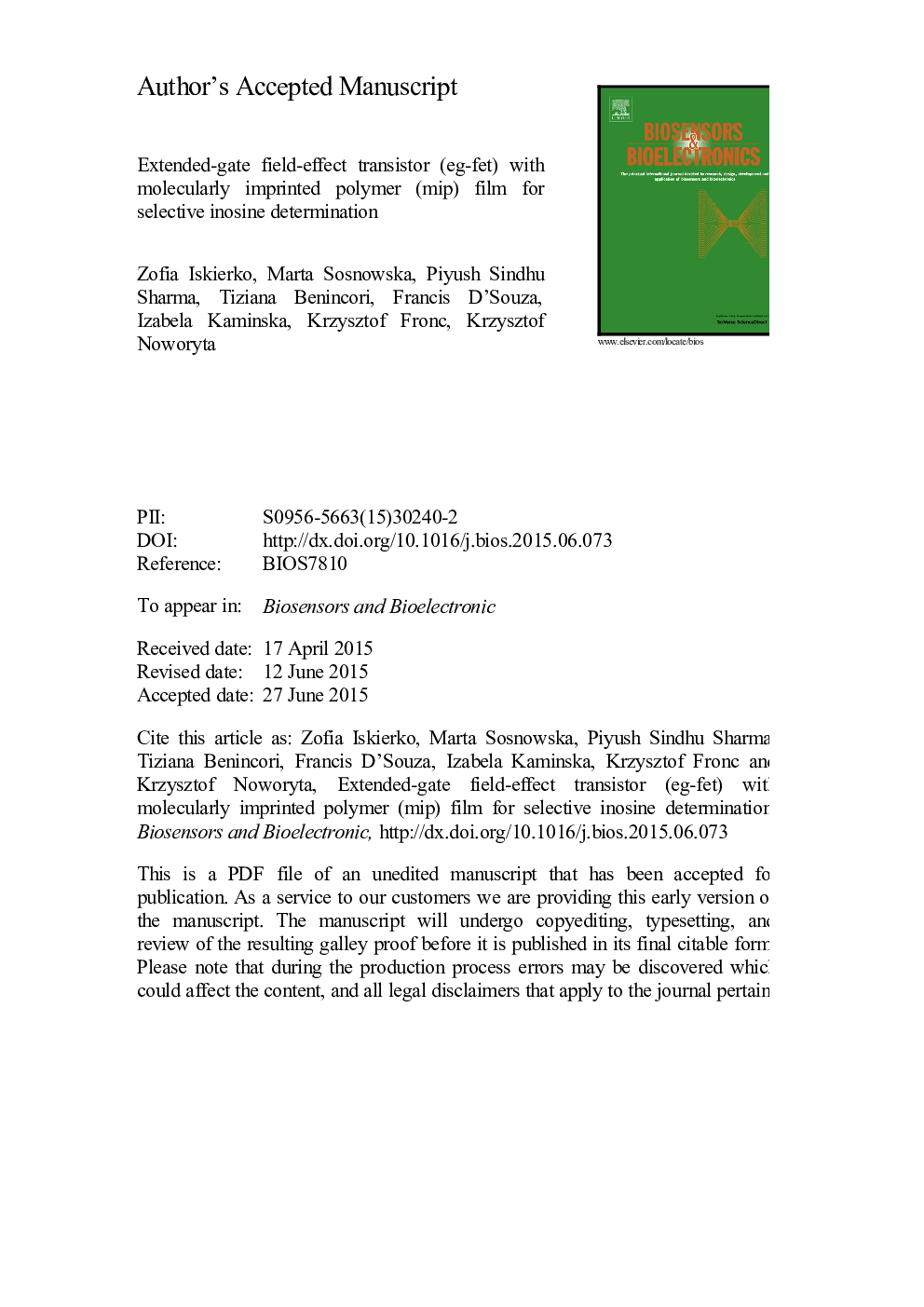| Article ID | Journal | Published Year | Pages | File Type |
|---|---|---|---|---|
| 7231802 | Biosensors and Bioelectronics | 2015 | 22 Pages |
Abstract
The linear dynamic concentration range of the chemosensor was 0.5-50 μM with inosine detectability of 0.62 μM. The obtained detectability compares well to the levels of the inosine in body fluids which are in the range 0-2.9 µM for patients with diagnosed diabetic nephropathy, gout or hyperuricemia, and can reach 25 µM in certain cases. The imprinting factor for inosine, determined from piezomicrogravimetric experiments with use of the MIP film-coated quartz crystal resonator, was found to be 5.5. Higher selectivity for inosine with respect to common interferents was also achieved with the present molecularly engineered sensing element. The obtained analytical parameters of the devised chemosensor allow for its use for practical sample measurements.
Related Topics
Physical Sciences and Engineering
Chemistry
Analytical Chemistry
Authors
Zofia Iskierko, Marta Sosnowska, Piyush Sindhu Sharma, Tiziana Benincori, Francis D'Souza, Izabela Kaminska, Krzysztof Fronc, Krzysztof Noworyta,
